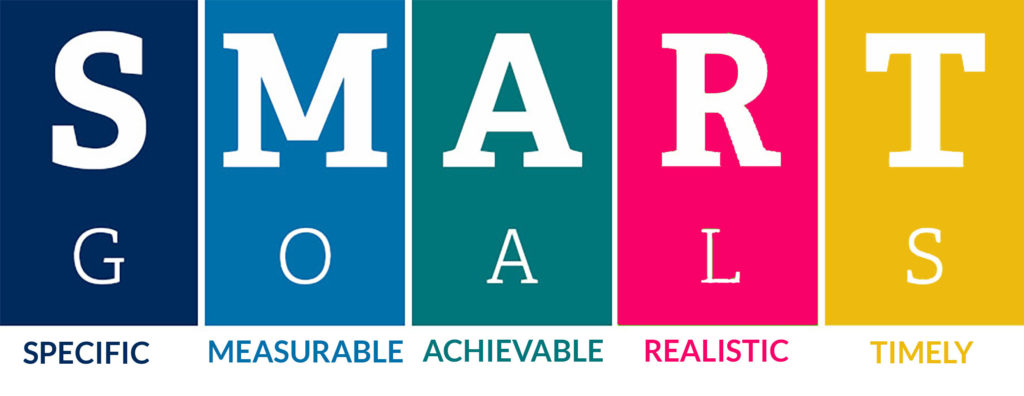Hybrid work adoption is continuing to increase. As we start to work more frequently with reduced face-to-face communication, it can create an ‘out of office’ ‘out of mind’ mentality which often leads to lower employee engagement. Lack of engagement might cause employees to become uninspired and de-motivated. Which, from an employer’s perspective, can also mean that workers are not being managed properly. The easiest way to ensure this alignment and engagement is maintained is by setting SMART goals. Here we’ll look at how SMART goals can help your team connect and some SMART goals examples.
Download your free guide to improving employee retention
Why SMART goals for hybrid work?
Working SMARTer brings structure and trackability into your goals and objectives. It’s a tried and tested way of improving the performance of your workforce. Setting verifiable objectives with clear milestones and understanding when a goal has been achieved. SMART objectives allow for linking up the objectives of multiple teams, departments or individuals. Whilst considering the broader aims of the company. Consistently tracking these goals makes sure that this alignment is kept consistent throughout the entire process.
Working on SMART goals will be more challenging than setting them. But, if you remain dedicated and ensure your team follow a strategy, then you can certainly achieve each goal that you set. You can also benchmark your objectives against prior company performance, cross-department analysis or through competitor research to help ensure they are realistic and attainable.
Unified goals

The approach strives to connect the organisation, its departments and teams along with their personal objectives in a manner that increases transparency and enables all employees to work together towards a unified goal.
Now you’ve answered “what are smart goals?”, your next step will be to set them. And we have 5 tips to keep in mind to keep this process a successful one.
SMART goals examples
So you’ve decided to use SMART goals. How do you make sure you’ve chosen a strong example that your team can buy into? Let’s say your goal is to “market a business”. An example of a weak goal would be to state “I will aim to make more sales”. Whilst this does outline an aim, it isn’t descriptive enough. A SMART goals example would be:
Specific: I’m going to learn how to use Facebook Ads and invest 30% of my profits into this marketing channel.
Measurable: I want to double my sales within the quarter.
Achievable: I have a reasonably successful small business that is ready to handle growth in sales.
Relevant: I want to make 6-figures per year working from home.
Timely: I will start a Facebook Ads course tomorrow and start running paid campaigns within 1 week. Once implemented, I will scale my ads activity. I will revisit and evaluate in 3 months.
Another style of goal may be less focused on numerical targets, managing a team effectively, for example. This is still suitable for the SMART goal process. Another example of a weak goal would be “I’m going to help the team communicate better”. An example of a SMART goal would be:
Specific: I’m going to help the team communicate better to free up time wasted on communication inefficiencies.
Measurable: Reduce av. time of 1.5 hours per day on email in half to 45 minutes per day.
Achievable: Simplify conversations by removing long email chains and using an instant messaging solution e.g. Teams or Slack.
Relevant: Empower my workforce to produce their best work and reduce time wasted on unnecessary and inefficient tasks.
Timely: We will implement a messaging solution within two weeks and half the time spent on communication within the next month.
SMART goal tips:
Now you have SMART goals examples to work with, we have put together four tips for you to ensure your goals translate across your team:
- PLANNING
Every SMART goal needs a SMART plan to go along with it. This is where you will outline the key milestones as well as potential bumps that could come up along the way as well as your schedule. One thing to keep in mind is that objectives need to be grounded on measurable outcomes. These outcomes have to be based on certain criteria, usually key performance indicators or skill levels. Unless the objectives of employee’s goals are based on business metrics, you will potentially be wasting company time and resources. - TRACKING
A good process needs regular updates. Momentum is important to maintain, and this goes double when setting goals between a distributed team. Any SMART goal worth achieving will take time before finalising, that is why it’s important for you to check-in on progress regularly of your SMART goals to ensure that you or your team are still there with you. Which will mean organising regular catchups and feedback sessions to keep you motivated as you achieve your end target. Keep this in mind for bigger goals that stretch over quarters, as this process will be even more imperative to their success. - OUTLINE OWNERSHIP
In order for your team to buy into what they are working towards, they need to envision success. And an easy way to do that is by laying out how the process of working towards the target is going to go. Once this is detailed and made transparent to the team, they will be able to see themselves completing, and achieving, the task at hand. The important details your team will need to know will be:- Who’s going to do what?
- Do they have (or how can they get) the skills to do a good job?
- Where’s the money coming from?
- What are the timescales?
- What does success look like?
- RECOGNITION
Even when achieving your smaller goals, it’s important to pat yourself on the back and boost morale in the team to stay on course. Be mindful of who is ticking tasks off their list and be sure to share the achievements being made. Taking a moment to celebrate will encourage others to do the same, meaning props start to become regularly given, keeping the company’s spirits up. To ensure a distributed team benefit from this addition to your culture, you can allow employees to receive recognition on a daily basis via a performance management app which can be accessed on mobile devices, managers don’t need to worry about communicating this much-needed positive reinforcement. Getting you ready to continue focusing on new SMART goals that you want to achieve. - AGILE
Don’t become stagnant. SMART goal setting is a process that changes over time. The first goals you set will most likely be very different from the goals you set a few years later, especially if you are in the embryonic stages of a business. As long as you are regularly revisiting your SMART goals, updating and adjusting them over time, recognising that not all goals are created equal and avoiding vague targets; you will be on the right track to accurately measuring your success.

Keeping the momentum
Using performance management software or performance management initiatives, so that this core messaging is built into the daily lives of your remote workers, is the first step towards firmly embedding goals into your culture and into your employees’ mindset. Digitising these processes will save time and effort for managers and HR professionals and ensure the focus is kept on targets and achieving them.
SMART Goals are powerful, motivating forces that can help your team feel united towards the same cause. Setting SMART goals will make you capable of getting the best results from your team, remote or in the office.






